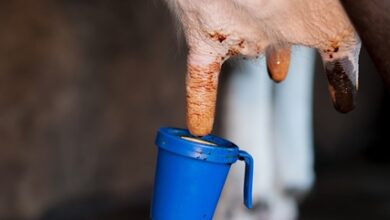Judy Vanessa
-
5 TOP REASONS WHY YOUR HENS ARE NOT LAYING
The most common question asked by poultry farmers is “why have my laying hens stopped laying?” There are many reasons…
Read More » -
CALF REARING
Calf feeding. • All newly born calves should be fed or allow to suckle colostrum from the mother within 24…
Read More » -
CHOOSING A DAIRY COW
Whether you are seeking a family dairy cow for your own use or a cow to use on a dairy…
Read More » -
GROWING OF AVOCADOS
Factors to consider when growing avocados Sourcing of good planting materials Certified nurseries- Farmers are advised to get seedlings…
Read More » -
MANAGEMENT OF HEIFERS
MANAGEMENT OF HEIFERS Female calves after weaning are called heifers. From about 150 days, management depends on the system and…
Read More » -
INFECTIOUS CORYZA
INFECTIOUS CORYZA IN POULTRY What causes this disease? The bacterium causing this disease is known as Hemophilus paragallinarum. Transmission The…
Read More » -
Dairy

MASTITIS
WHAT IS MASTITIS? Clinical bovine mastitis is where by the cow displays definitive symptoms of the disease. It may be…
Read More » -
COMMON DISEASES AFFECTING POULTRY
NEWCASTLE DISEASE/PARAMYXOVIRUS 1 Paramyxovirus 1 or Newcastle Disease is a highly contagious viral disease affecting poultry of all ages. Affected…
Read More » -
Feeding dairy cows with silage
What is Silage? Silage is high-moisture fodder preserved through fermentation in the absence of air. These are fodders that would…
Read More » -
SHEEP PRODUCTION
As a farmer it is important to always know the type of sheep breeds you have in the farm. Here…
Read More »
